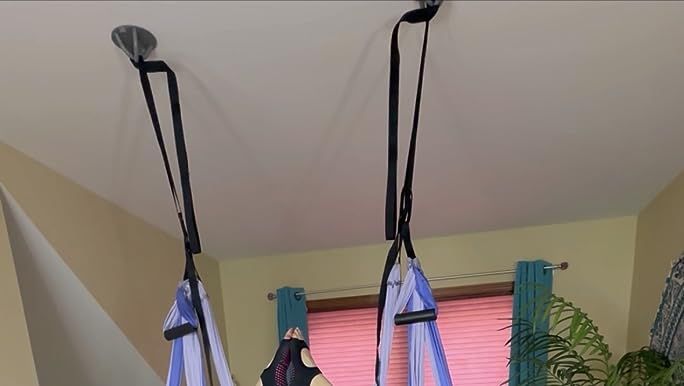Yoga swings, also known as aerial yoga swings, are a fantastic way to enhance your yoga practice, improve flexibility, and reduce stress. Setting up your own yoga swing at home can be an exciting and rewarding project. This guide will walk you through everything you need to know to set up your yoga swing safely and effectively.
1. Choose the Right Location
The first step to setting up a yoga swing is choosing the right location. The space should be high enough to allow for full range of motion, ideally with a ceiling height of at least 8 feet. Look for a sturdy ceiling beam or a solid structure capable of supporting your weight. Avoid places with low ceilings or anything that could obstruct your swing’s movement.
2. Select the Right Yoga Swing
Yoga swings come in different materials and sizes, so it’s important to choose one that suits your needs. Most yoga swings are made of durable fabric, such as nylon or parachute material, and come with adjustable straps for height adjustment. Be sure to check the weight limit of the swing to ensure it’s suitable for your body.
3. Install the Ceiling Hooks or Mounts
Next, you’ll need to install ceiling hooks or mounts to secure the yoga swing. Use a stud finder to locate the beams in your ceiling, ensuring they are strong enough to hold the weight. For the best results, use heavy-duty ceiling hooks that are rated for at least 500 pounds. Drill holes in the ceiling where you plan to install the hooks, making sure they are evenly spaced and level.
- Tip: If you're unsure about drilling into your ceiling, you may want to consult a professional to ensure the installation is secure.
4. Adjust the Height of the Swing
Once your ceiling hooks are securely installed, hang the yoga swing from the hooks. Adjust the length of the straps according to your height and comfort level. The swing should hang low enough to allow your feet to touch the ground while seated, but high enough for you to fully extend your body during poses.
5. Test the Swing for Safety
Before you begin using the swing, it’s important to test it to ensure it’s securely attached. Gently pull on the swing to check that the hooks and straps are stable. Gradually add more weight to the swing, ensuring it holds your body without any issues.
6. Get Started with Basic Aerial Yoga Poses
Now that your yoga swing is set up, you’re ready to start your aerial yoga practice! Begin with basic poses like the "seat pose" where you sit in the swing with your legs dangling. Over time, you can work on more advanced aerial yoga poses that require balance, flexibility, and core strength.
Conclusion
Setting up a yoga swing at home can be a fun and empowering way to enhance your yoga practice. By following these steps carefully, you’ll ensure a safe and effective setup that will bring you benefits for years to come. Whether you're looking to improve flexibility, strength, or simply enjoy a new type of workout, aerial yoga with a yoga swing is a fantastic option.
